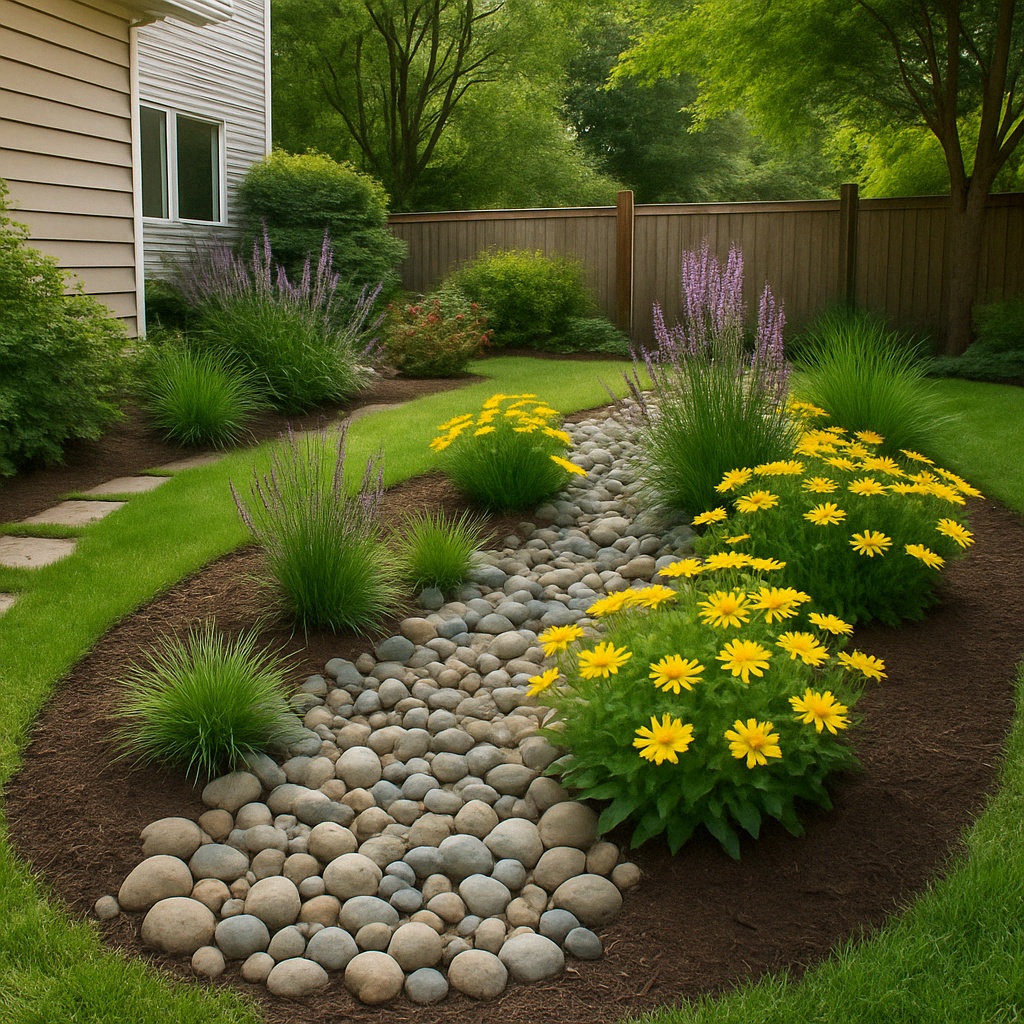
Why Bellevue Homes Benefit from Rain Gardens
Bellevue’s climate is known for frequent rain, which can cause yard flooding, erosion, and runoff pollution. A rain garden is a shallow, landscaped area that captures runoff, filtering it through deep-rooted native plants. This improves drainage, reduces flooding, and beautifies your landscape—all while helping to protect local streams and wildlife.
What Is a Rain Garden?
Unlike a pond, rain gardens are designed to drain quickly, holding water just long enough for it to soak into the ground. Native Pacific Northwest plants with deep roots soak up excess water and naturally filter out pollutants. Rain gardens also attract butterflies, bees, and songbirds, making them a win for local ecology.
Planning Your Rain Garden
- Location: Place at least 10 feet from the house, away from septic or steep slopes.
- Size: The rain garden should be 10–30% the size of the area draining into it (like your roof or driveway).
- Soil Test: Check that your soil drains at least 1 inch per hour. Amend with sand/compost if needed.
- Shape: A shallow bowl (6–12” deep) with gently sloping sides works best.
Watch during heavy rain to see where water collects and direct downspouts or swales toward your garden.
Best Native Plants for Bellevue Rain Gardens
- Wet center: Oregon iris, lady fern, swamp milkweed
- Drier edges: Red-flowering currant, snowberry, coastal strawberry
- Pollinator boosters: Sedges, rushes, yarrow, and Douglas aster
Ask your local nursery for native, water-tolerant perennials and grasses best for your yard’s sun/shade levels.
Building and Maintaining Your Rain Garden
- Excavate: Dig to a depth of 6–12 inches, shaping a gentle depression.
- Amend Soil: Mix in compost and sand if drainage is slow.
- Plant: Cluster plants by their wet/dry tolerance and mulch well.
- Direct Runoff: Extend downspouts or dig a shallow swale to guide water to the rain garden.
- Maintain: Weed and water during the first summer. Add mulch as needed and prune dead growth each spring.
Seasonal Care and Troubleshooting
- Check after big storms for standing water; if it remains after 48 hours, improve soil mix or drainage.
- Cut back perennials at the end of winter to make room for new growth.
- Refresh mulch yearly to keep out weeds and keep roots cool.
- Mix in boulders or logs for wildlife habitat and visual interest.
Expert Resources
For more spring inspiration, check out our Spring Gardening Tips for Bellevue Homeowners—your guide to thriving, eco-friendly Pacific Northwest yards.

